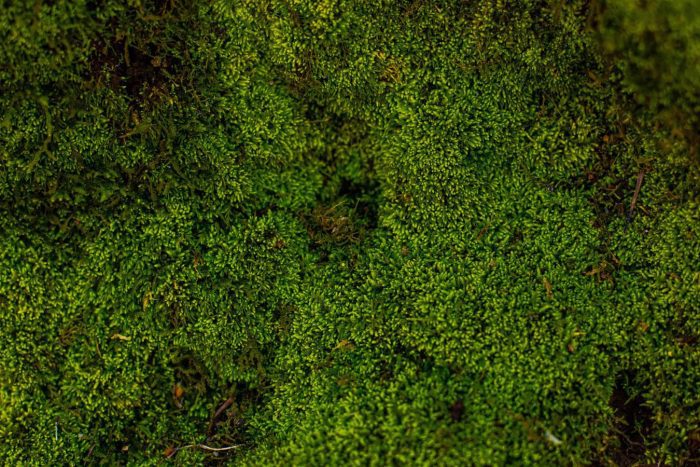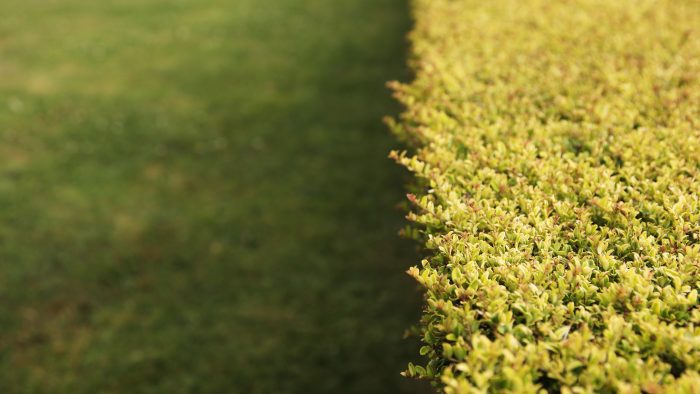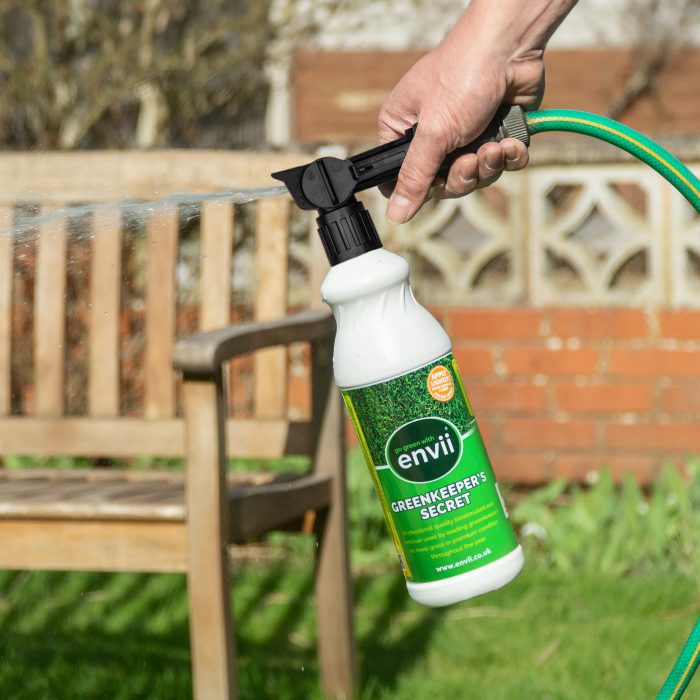Most lawn owners, at some point, will have had the displeasure of dealing with moss. The look of moss on your lawn is less than desirable and is usually an indicator of a much bigger problem. By knowing the factors that cause this weed to grow, it is, therefore, possible to prevent moss.
Before we look at ways to prevent moss, we must first dive into
what moss actually is and what causes it.
What is moss?
Moss is a shallow-rooted plant that thrives in moist, shady areas. In the right conditions, moss can grow pretty much anywhere, including on rocks, tree bark, roofs and of course, lawns.
This weed can appear as small tufts or a thick squidgy carpet-like layer of small leaves with even shorter stems. Usually coarse, it can be yellowish-green, greenish-brown or green in colour. Unlike most plant systems, moss does not have roots, it has underground structures called rhizoids instead.
Moss on lawns makes the surface uneven and spongy to walk on. It competes with grass and depending on the conditions of the soil depends on which wins. The good news is moss doesn’t cause any damage and does not kill the grass. The only place moss can cause damage is on roofs.
Surprisingly, some gardeners grow moss on purpose as it can play a vital role in the ecosystem.

What causes it?
Moss is usually caused by underlying issues in soil, however, it has been known to grow temporarily after a period of drought or waterlogging. In established lawns some detective work is required to understand the root cause of the problem and why the moss is growing. The main reasons for a moss invasion are as follows; poor drainage, shade, close mowing, over-use, lack of feed or acidic soil conditions.
New lawns are susceptible to moss as they tend to become compacted from heavy machinery driving over the land.
Compacted soil leads to no aeration and poor drainage. Moist, shady conditions are the perfect environment for moss to grow.
So how do you prevent moss from growing on your lawn? Read on to find out.

How to prevent moss
The ideal conditions for grass to grow is in a sunny space with well-aerated, alkaline soil that dries out between watering’s. Whereas moss favours the opposite, moss prefers damp, shady compacted soil. To effectively prevent moss from growing on your lawn, an environment that encourages grass and discourages moss must be created. Remember, moss only grows where the grass isn’t present.
As mentioned earlier in the blog, there are 6 main causes of moss. This next part will go into more depth about each potential factor that could be the cause of moss growth as well as the appropriate solution.
Shade
Shade prevents grass from photosynthesising and as a result, the grass becomes weak and can eventually die off. A lack of sunlight can also make it harder for an area of land to dry out. To increase the amount of sunlight reaching your lawn, consider removing branches and bushes that are casting a shadow over your turf.

Close Mowing
The height at which you cut your lawn can have an impact on how susceptible your lawn is to an invasion of moss. If the grass is cut too short, it becomes weak. A thick layer of foliage over the soil ensures there is no room for moss to grow. Change the setting on your lawn mower so that the grass isn’t cut as short.

Overuse
If your lawn is overused it can create the perfect environment for moss to grow. An overused lawn can leave the lawn compacted and reduce the amount of aeration and drainage in the soil. It will be clear if the lawn has been overused as the grass will be flattened, yellowish, waterlogged and/or muddy. Consider giving your lawn a break and staying off of it for a while. For further advice, follow the steps for poor drainage.

Lack of feed
A lack of feed can be another culprit for a moss invasion. If the lawn is not given a good feed the grass can become sparse. Reseed any areas in your lawn that are sparse and apply a good fertiliser such as envii greenkeepers secret to grow a thick healthy lawn.

Acidic soil conditions
The pH of your soil is crucial to the overall health of your lawn. A common problem with lawns is that the pH is too low and the soil is acidic. The best way to solve this is to add garden lime to make the soil more alkaline. It is important to note that lime does not kill most directly.

Poor Drainage
To know if you have poor drainage, think about when you last had heavy rainfall. Was the water sitting on top of your lawn or did it sink in quickly? If you do have poor drainage in your soil there are a couple of ways to tackle this. The first option would be to use a garden fork to poke holes throughout your lawn. This method can be time-consuming and may not be possible for those with larger lawns. The second, easier, method would be to use envii activearth. Activearth is a soil fertility activator that uses beneficial bacteria and other nutrients to encourage earthworm activity and increase aeration and drainage in the soil. This throw and go product is perfect for new build lawns and even works in clay soil.

Moss on Lawns
If moss is already present on the lawn, a two-staged attack is required. The moss must first be removed before tackling the underlying cause. Follow the steps below to remove the moss from your lawn and then use the above methods to prevent the moss from returning for a long-term effective solution.
How to remove moss
Physically removing moss is a short term solution. If the underlying problem is left unresolved, the moss will return year on year. Therefore this must be your first step in removing moss from your lawn for good. Below are 3 methods to remove moss:
Scarification
Scarification can be done on a small lawn using a rake. On larger lawns consider using a lawn scarifier. The dead moss that has been raked off can be added to compost although it can be slow to break down in bulk. The best time to do this is in Autumn.

Moss Killers
Chemical moss killers are the quickest solution to removing moss from lawns. Moss killers usually change the acidity of your lawn. It must be sprayed evenly over the entire lawn, not just the problem areas, as the lawn could grow back patchy and discoloured. The speed at which chemical moss killers tackle moss is an obvious advantage and if the moss killer includes a fertiliser it may even improve the look of the lawn. But we must not forget the obvious downsides to spraying chemical products on your lawn. These kinds of products can be toxic to humans, pets, other plants, animals and fish. Products containing zinc are specifically toxic to aquatic life and must not be used near ponds, or any natural water source.

Non-toxic moss killer
There are a couple of less toxic approaches and even organic moss killers available. A soap-based moss killer is a preferred method by most lawn owners. Mix 60ml of dish soap with 4 and a half litres of water and fill it up in a spray bottle. Spray over any patches of moss that is present. Hold the bottle a couple of inches away and spray the area until it is completely drenched. Alternatively, some lawn owners use citric acid. These methods will take longer to work than a chemical moss killer but are a lot safer.

Preventing moss may seem like a time-consuming task, however it is much easier to maintain a healthy lawn than it is to remove and control a moss invasion.
Discover more on lawns with our guide to spring lawn care, 4 essential jobs to do.

 Call us on 01246 240880
Call us on 01246 240880 Free 48hr Delivery
Free 48hr Delivery Sign-up and receive 10% off
Sign-up and receive 10% off